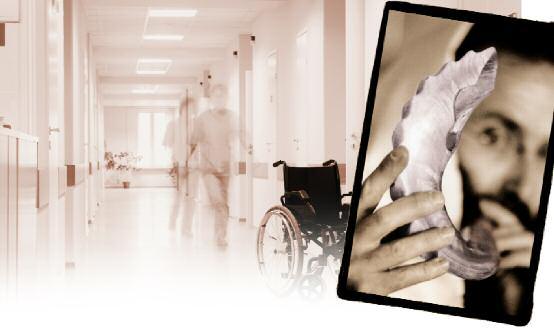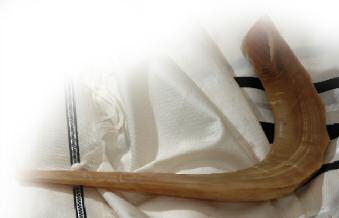The Shofar Blower
 “Today is the Jewish New Year,” the Lutheran pastor would announce to the hospitalized patients at the edge of Brooklyn, as I stood silently at his—or sometimes her—side, white-knit kippah on my head and a small shofar in my hand, “and the rabbi has come to blow the ram’s horn.”
“Today is the Jewish New Year,” the Lutheran pastor would announce to the hospitalized patients at the edge of Brooklyn, as I stood silently at his—or sometimes her—side, white-knit kippah on my head and a small shofar in my hand, “and the rabbi has come to blow the ram’s horn.”
It was an annual ritual at the start of Tishrei, and as a volunteer ba’al tekiah, I never knew what I found more disconcerting—the pastor’s accurate-but-generic designation to largely secular Jewish patients and their clearly non-Jewish roommates of Rosh Hashanah as the “Jewish New Year,” the pareve description of the shofar as the “ram’s horn,” or my annual elevation to “rabbi.” I would smile inwardly at my Lutheran semichah.
At least the first two descriptions are accurate.
A layman, a journalist, a shofar blower by late-in-life training, I have made the few-mile trek for some fifteen years from Boro Park’s Chareidi milieu to Lutheran Medical Center in Brooklyn’s Sunset Park neighborhood. During a nearly hour’s walk, I pass through a protean neighborhood tableau, glimpsing mosques and Chinese laundries and Hispanic restaurants.
The solitary walk starts preparing me for the shift from an intensely Jewish environment to one decidedly not so. By the time I arrive at Lutheran’s electric front door, waiting for an apparently non-Jewish staff member or visitor to activate the opening mechanism, then inconspicuously as possible following at his or her heels, I am prepared for the task.
Growing up in a non-Orthodox family, I had never learned to blow shofar, but after learning the art from two masters—Heshy Friedman, an economics professor and longtime friend, and Jerome Hornblass, an attorney and former State Supreme Court Justice—and accompanying them on their yom tov rounds, at Brooklyn’s Maimonides Hospital and Manhattan’s Memorial Sloan-Kettering Cancer Center, respectively, I felt spiritually fortified.
The Bikur Cholim of Boro Park needed someone to cover Lutheran hospital; the organization’s Boro Park-based volunteers understandably preferred to stay closer to home after a full morning and early afternoon of davening. I felt that God had chosen me for this assignment. I’m single, don’t have to hurry home to make Kiddush for a family and I’m in decent shape for someone who’s now past sixty. From a ba’al teshuvah background, I feel comfortable in a non-Jewish hospital, dealing with the non-Orthodox patients who tended to end up there and the non-Jewish personnel who work there; a dilettante linguist, I know a bit of Russian, an instant entrée to the many Jews from the former Soviet Union who find themselves infirm or recuperating each Rosh Hashanah.
As awesome a responsibility as blowing shofar is in any place, it’s more so in a hospital so far removed from a center of Yiddishkeit, where people are in special need of Heaven’s blessings. If I don’t do it, if I don’t do it right, the mitzvah goes undone. Maybe the few dozen patients—and the other friends and relatives, doctors and nurses—whom I encounter each year, won’t hear shofar. And that’s not an option.
I start preparing a few months in advance, cleaning my shofar, blowing the kolot, studying the applicable halachot and hashkafot, working on my kavanah.
It’s not easy.
I’m not musically inclined; bringing forth the proper notes does not come naturally to me.
If spending Yom HaDin in the ER and a hospice unit doesn’t focus your mind on teshuvah, nothing will.
I have to make sure my intentions, to help fellow Jews have a meaningful yom tov, are pure. In addition to standing before Jews who are facing often-unexpected physical and spiritual tests—Lutheran Hospital has a noted trauma center, taking in people on an emergency basis who had planned to be at home or in shul that day—I am standing before the Seat of Judgment.
How will I be judged for what I say and do during my hours walking up and down the halls of the hospital?
I go to serve—if not to inspire—and always come back feeling inspired. If spending Yom HaDin in the ER and a hospice unit doesn’t focus your mind on teshuvah, nothing will.
Every year there are memorable people and unforgettable stories.
Sometimes there are near miracles, or at least instances of extreme hashgachah: The people in comas to whom I whisper an introduction and quietly make the shofar sounds. The woman who took her breathing tube out of her mouth to quietly say “thank you.” The woman on her gurney who started to applaud after I finished blowing. The people who are hearing shofar for the first time. The black hatter from Flatbush whose father had tripped and seriously —fatally, it turned out—injured himself on the way to shul that morning and asked me to stay with him for what ended up to be nine hours. The convicts handcuffed in bed, police officers standing outside. The non-Jews, Christians and Muslims, who ask me to blow the shofar or say a blessing for them. And this, almost every year: the nurse, whom I mistakenly had not informed of my presence and mission, who rushes into a room after I’ve finished blowing and says she thought she heard someone crying. At least my kolot fulfilled that shitah.
Every year there are people who cry.
The cries start as soon as I put the shofar to my mouth; usually it’s the elderly, usually the secular. The Lutheran pastors who would accompany me on my rounds the first few years—now I’m left to wander around unescorted—were mystified. Why are these few simple sounds so emotional? A shofar is very evocative, reminding some Jews of their long-ago past, others of their impending, possibly truncated future, I explained.
My most inspirational memory is of an incident that took place two years ago. A woman in the hospice unit, about sixty- or seventy-years-old, with her daughter standing at her bedside, asked me what is more important on Rosh Hashanah—praying or listening to the shofar.
Neither rabbi nor chaplain, I gave a glib answer: Listening to shofar is passive, I said; praying is active—you can tell God what you want.
The woman, who probably had no more than a few months to live, looked at me and said slowly, “I’ve had a good life. I have a great daughter. There’s nothing I need from God.”
I, who am in good health, should be so sameach b’chelki, satisfied with my lot, on the day when my year’s fortune is determined.
One year, walking the halls with my shofar in hand, I was stopped by a young man. “You’re blowing the shofar?” he asked. “Yes. Have you heard it yet?” “No.” “Do you want to hear it?” “Of course.”
We went into the patient’s room; I took out my photocopied sheet of the berachot and offered it to him. “You can make the blessings,” he said—a common request. Most patients defer to me.
I finished the kolot. “Thank you, rabbi,” he said. Whereupon he crossed himself.
He was, it turned out, a good Catholic. A Catholic who loved the sound of the shofar.
I had another story.
And I had Catholic semichah to add to my Lutheran semichah.
Steve Lipman is a staff writer for the Jewish Week in New York.

